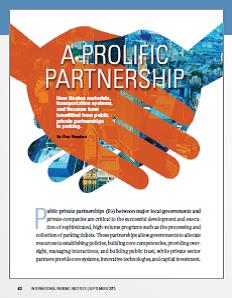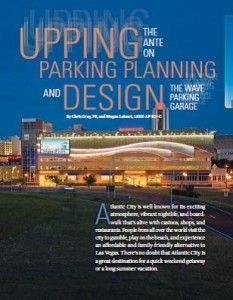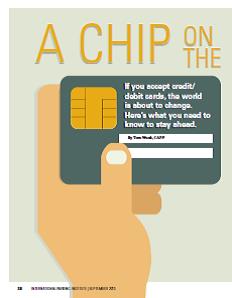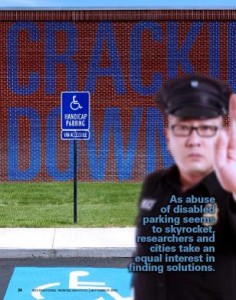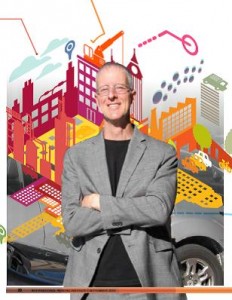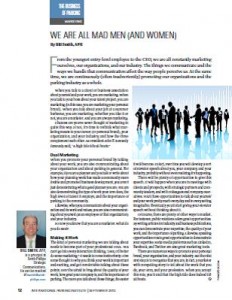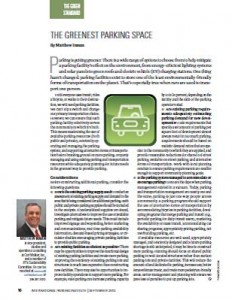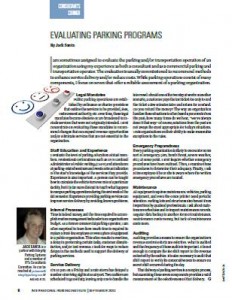Public private partnerships (P3) between major local governments and private companies are critical to the successful development and execution of sophisticated, high-volume programs such as the processing and collection of parking tickets. These partnerships allow governments to allocate resources to establishing policies, building core competencies, providing oversight, managing interactions, and building public trust, while private sector partners provide core systems, innovative technologies, and capital investment.
Partnerships allow cities to focus resources on core municipal services while private sector partners fund the development of new technologies in non-core areas, such as on-street parking management. As cities face increasing challenges to deliver greater customer service and convenience with limited funds, the use of P3 is becoming increasingly relevant.
In Boston, the Office of the Parking Clerk (OPC), a division of the Boston Transportation Department, is responsible for the collection of $66 million in fines and fees from parking tickets, as well as the development and maintenance of the city’s resident permit parking program. Obviously, Boston is not solely in the business of providing parking management products and services, and like most city government agencies, has limited resources to perform these tasks. As a result, the city has procured a contract with a business partner to facilitate this type of infrastructure.
Considerations
The scope of work in this type of program involves many considerations. The first necessity is a baseline application that can handle the city’s daily processing volumes and scale to changes in business flow. Choosing a vendor with a proven, demonstrated track record of success and honorable performance is of paramount importance.
Our program consists of the following applications:
- Parking application
- Online resident permit procurement
- Sign management
- Abandoned vehicle system
- Hearing adjudication (paperless)
- Web portal for constituents
- License plate recognition
- Online resident permit rental program
- State-of-the-art network design
- Call center
- Handhelds
- Boot and tow
- Temporary signage
- Valet parking program
- Ad-hoc reporting
- Pay-by-phone
- Online constituent dispute form
- Fleet vehicle system
- Pay-by-web
Oversight
The Boston Transportation Department manages its partnership agreements through strict adherence to Commonwealth of Massachusetts Chapter 30B procurement regulations; we have some of the strictest such laws in the country. These regulations ensure complete transparency and accountability between the city and its private sector partners. Boston has developed a world-class parking management program as a result of collaborative efforts with premier service providers, and the Office of the Parking Clerk is responsible for ensuring that its strategic partners deliver—and the city receives—the best value possible.
Program integrity is critical to the successful operation of a parking management program. Boston has one of the highest collection rates in the country (93 percent) because the public has faith in the city’s records. Violators know that sanctions will be promptly and accurately deployed against individuals who fail to pay. But effective parking management is not punitive; rather, it is about convenience for motorists, reducing traffic congestion and managing parking demand, and improving the quality of life for residents, commuters, and visitors.
RMV Relationship
Access to the Registry of Motor Vehicles (RMV) is one of the most strategic partnerships a government agency can have. Ours has existed since 1981 and is the prime way the agency collects monies that are owed to the department. Because of this, we have one of the highest name and address acquisition (hit rates) in the country, at 96.54 percent statewide.
What is more important than the hit rate? The collection rate: Boston’s is 93 percent during 24 months (exclusive of our collections program). Close oversight and ongoing monitoring of hit rates by city personnel is essential—even a 1 percent negative deviation in hit rates would produce not only significant revenue loss, but also significant loss of public confidence due to potential improper noticing. Over a three-year contract period, it’s estimated that a 1 percent hit rate loss would result in a revenue reduction of at least $1.2 million.
Loss in revenue
1% Delta Loss in Revenue
Massachusetts 15,240 $609,600
New Hampshire 7,500 $315,000
Vermont 690 $ 28,290
Maine 2,400 $103,200
Rhode Island 4,500 $189,000
Boston Becomes a Model
OPC established one of the first partnerships to support the delivery of on-street parking services in 1982. This positioned the city to be among the first in the U.S. to offer real-time, online parking ticket payments via the internet, implement handheld ticket-writing devices, and use a truly paperless document imaging scanning solution. Additionally, during the Y2K era, all applications were successfully and transparently transitioned to a more reliable and robust platform. These innovations have measurably improved the accuracy of citations, which directly translates into improved name and address hit rates, making it easier for citizens and visitors to pay parking citations, facilitating a true paperless environment, and improving overall service delivery to the public. Today, Bostonians can also request hearings, view citation data, and apply for permits online. Boston was an early adopter of multi-space kiosk-style parking meters and implemented the Boston Meter Card for more than 7,000 single-space meters while piloting single-space meters that accept credit cards. All of these innovative technologies have made Boston OPC one of the most respected departments in city government.
Paperless Environment
Boston was an early adopter of the paperless approach to all correspondence and documents relative to citation dispute resolution and adjudication. This clear vision has paid immense dividends relative to our operational efficiency. As a result, correspondence, hearings, disputes, residential permit applications, rental permit applications, and much more is presented in a paperless environment via our online system. Better yet, there are no storage costs. As a result of this streamlined approach, original documents can be efficiently and accurately retained only as necessary.
OPC retains all online data and images in our specialized archive system. It is important to note that costs for online data storage can be significant. Therefore, effective and diligent data retention and storage and archive systems are critical to an organization’s success.
Public Trust and Transparency
Boston procurements are governed by the procurement regulations of` Massachusetts General Laws Chapter 30B, and the city takes these regulations quite seriously. These guidelines ensure a fair and objective procurement process in Massachusetts via the request for proposals (RFP) and invitation for bids processes. It breaks down further to a granular level for the RFP process via comparative evaluation criteria.
All prospective vendors are measured against clearly stated objective evaluation criteria as, for example, highly advantageous to unacceptable, with varying measures in between. It is incumbent upon the city to define system specifications and services such that proposals submitted by prospective vendors can be independently evaluated based on stated RFP requirements. As a result, the city is optimally positioned to preserve the public’s trust throughout the procurement process.
The public expects municipal administrators to consistently make fair and impartial decisions on their behalf. After all, their tax dollars are paying for these systems and services. The municipal manager’s responsibility does not end when the contract is signed. Contract monitoring and control are paramount and must be ongoing and dynamic. Expectations must be clearly stated in RFP and contract documents; service levels must be stated, measured, and monitored.
MGL Chapter 30B can be downloaded at mass.gov/ig/publications/manuals/30bmanl.pdf.
Subcontractors
Subcontractor relationships must be clearly articulated in RFP and contract documents. While subcontractor arrangement responsibility is delegated to the prime vendor, municipalities must ensure that transparency and impartiality trickle down to this level. Boston retains close oversight of subcontractor arrangements with the prime vendor. We consider these important components of the procurement process and factor subcontractor attributes into our evaluation process. We also believe that municipal dollars should be spent locally and factor the physical location of not only the prime vendor, but also subcontractor systems, services, and facilities into our overall proposal evaluation process.
Keys to Success
Vendor partnerships require clearly-stated expectations and responsibilities. It is incumbent upon municipalities to define system specifications, expectations, and scope of service levels. As a result of such diligence, vendors will be well positioned to successfully meet such expectations. Vendor relationships are both dynamic and multi-directional; the process is fluid and flows both ways. A successful partnership requires openness, transparency, and a willingness to meet the demands of public sector service requirements while preserving the integrity of the public’s trust via the procurement process.
It is critical to cultivate a culture of trust with service providers. Strategic and well-managed partnerships will position your organization for continued success and allow you to successfully achieve your goals and objectives, now and in the future.
Gina FiANdaca is director, office of the parking clerks, in the Boston Transportation Department. She can be reached at gina.fiandaca@cityofboston.gov or 617.635.3669.

